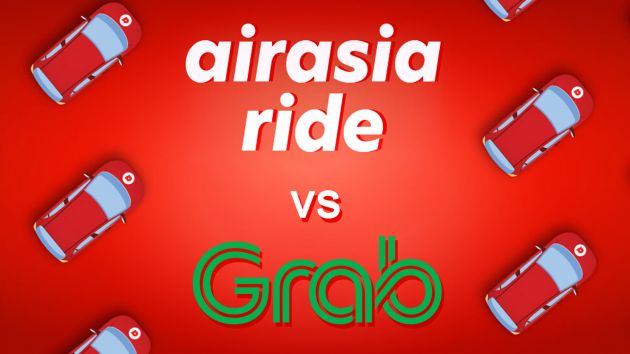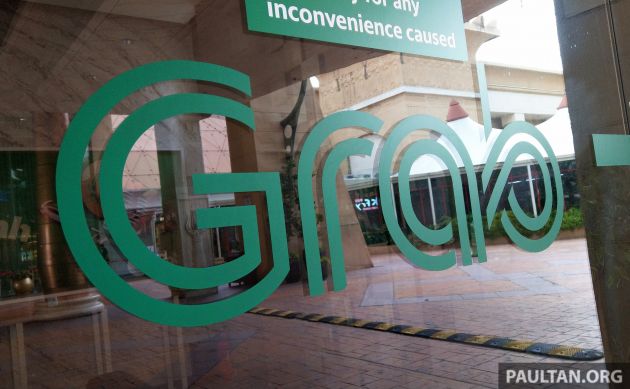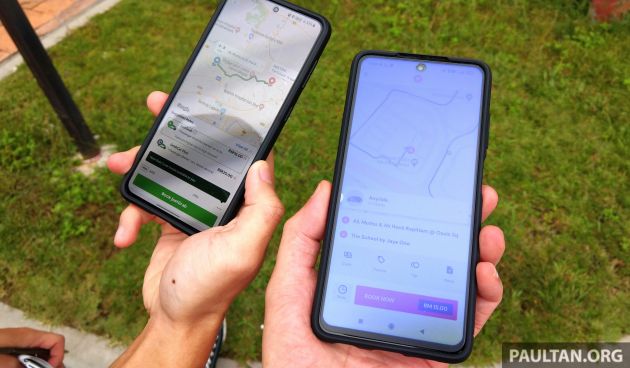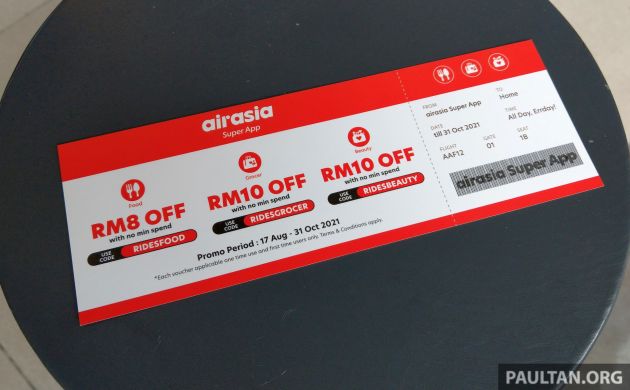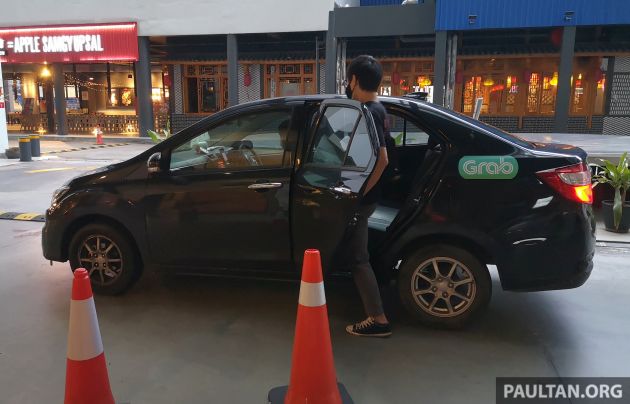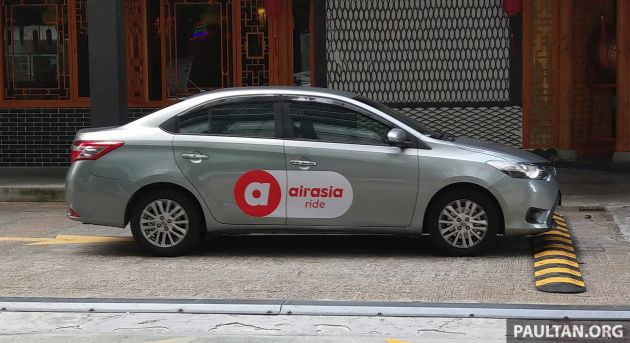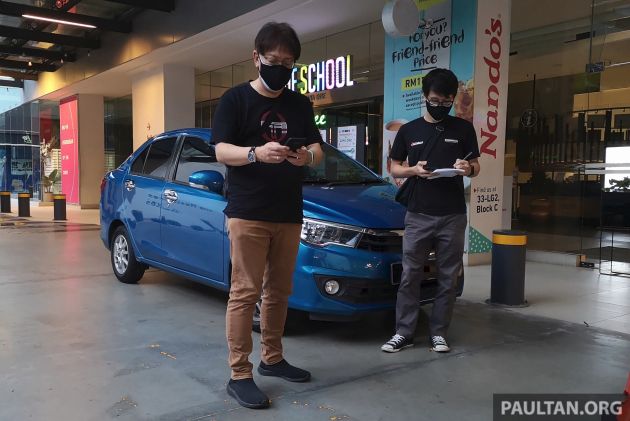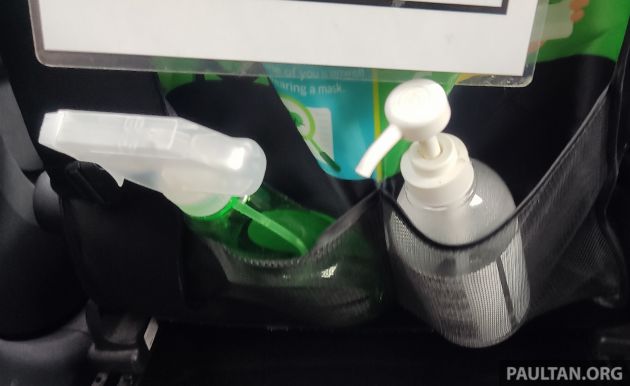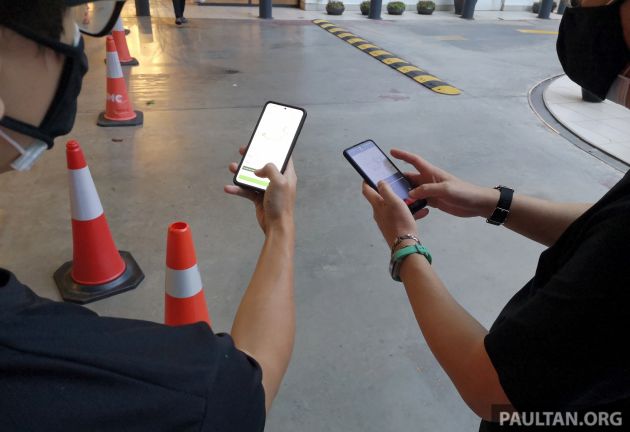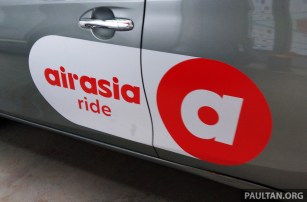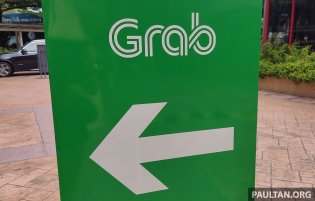Ride-sharing may have taken a downturn in the past year and a half, but there’s no denying that the service, which has become an integral part of urban mobility, remains very much a business worth investing in. This is evidenced by AirAsia’s formation of its new AirAsia Ride (AAR) platform, officially launched two days ago.
The landscape has long been dominated by Grab after Uber left town in 2018 following its South-East Asian operations merger with the former. Smaller players have done little to dent the leader’s hold on things, but the emergence of AAR is looking to change that tilt somewhat.
The company’s new offering, formed from the purchase of ride-sharing provider Dacsee, will compete against Grab and other e-hailing services in the country. It’s integrated within the company’s Super App, which also provides food delivery with Teleport’s acquisition of DeliverEats, shopping as well as hotel and flight booking services.
Even if it is still early days for the ride-sharing platform, we decided to try out AAR alongside Grab to gain some first impressions about it, to see what the service offers and whether it has enough to take on the established player in e-hailing, doing so in a series of rides on both services at the same time.
Setting up for the ride
For this sampling, four trips were made on each platform, with Gerard and I using AAR and Grab twice so we could observe both services. We timed the trips, starting from when both us placed a booking. To complete the set, the time was also taken down when a driver was assigned, when the car showed up, and upon arrival.
We chose not to use promo codes or loyalty points to alter the fare cost, and made no route suggestions, leaving it to the drivers to get us there. As for vehicle category selection, we originally wanted to try out all available segments to see how the platforms fared on a broader scope, but had to eventually limit it to compact and six-seater.
This was because not all vehicle categories were available on AAR, at least not on the first day of its service. When we utilised it, what was available was compact, six-seater, taxi and anyride, which means taking whatever is available, but there was no sign of premium or premium MPV tabs to select from.
The trips were kept to a relatively shorter distance to minimise both movement and exposure time, and we kept to SOPs – aside from both of us being fully vaccinated and well past 14 days from the second dose, we remained double masked at all times, with no physical contact. We simply got in the car, regrouped when arriving at a location before heading on to the next.
The trips
First trip: UOA Business Park, Glenmarie (Driven office) to Sunway Pyramid
AirAsia Ride
- 3:17 pm: Placed booking on AirAsia Super App using AnyRide category. Fare was RM7.
- 3:22 pm: Still no driver assigned. App says there are no drivers in the area.
- 3:23 pm: Add RM3 tip to entice drivers.
- 3:24 pm: Assigned a driver (Perodua Axia without AAR branding).
- 3:29 pm: Driver arrives.
- 3:40 pm: Arrived at Sunway Pyramid. Fare: RM10
Grab
- 3:17 pm: Placed booking on Grab app using JustGrab category. Fare was RM9.
- 3:18 pm: Assigned a driver (Proton Saga without Grab branding).
- 3:24 pm: Driver arrives.
- 3:35 pm: Arrived at Sunway Pyramid. Fare: RM9
Advantage Grab, being faster point-to-point by five minutes and also in terms of cost. The AAR base fare was cheaper by RM2, but the tip pushed it to RM1 more.
Second trip: Sunway Pyramid to Oasis Square Ara Damansara
AirAsia Ride
- 3:51 pm: Placed booking on AirAsia Super App but now using six-seater category. Fare was RM19.
- 3:57 pm: Three retries, but still no driver assigned.
- 3:58 pm: Added RM3 tip to entice drivers.
- 3.59 pm: Still nothing. Increased tip to RM6.
- 4:00 pm: Still nothing. Increased tip again to RM10.
- 4:05 pm: Still nothing. Increased tip to the maximum of RM20.
- 4:08 pm: Gave up. Switched to Grab. Fare was RM22.
- 4:09 pm: Assigned a driver (Perodua Alza without Grab branding).
- 4:25 pm: Arrived at Oasis Square Ara Damansara. Fare: RM22
Grab
- 3:51 pm: Placed booking on Grab app, but now using six-seater category. Fare was RM22.
- 3:52 pm: Assigned a driver (Perodua Alza without Grab branding).
- 3:59 pm: Driver arrives.
- 4:12 pm: Arrived at Oasis Square Ara Damansara. Fare: RM22
Advantage Grab, likely given the mall location, with the trip being made 13 minutes faster. Here, AAR was a non-starter. Notably, even though only one passenger is allowed on e-hailing rides right now, there was no difficulty getting an MPV, although we doubt that anyone really would because of the extra cost.
Third trip: Oasis Square Ara Damansara to The School at Jaya One (swap apps)
AirAsia Ride
- 5.00 pm: Placed booking using AnyRide category. Fare was RM15, but increased to RM17 soon after, likely due to peak hour pricing.
- 5:01 pm: Assigned a driver (Toyota Vios with AAR branding).
- 5:06 pm: Driver arrives.
- 5:28 pm: Arrived at The School at Jaya One. Fare: RM17
Grab
- 5:00 pm: Placed booking on Grab app using JustGrab category. Fare was RM16.
- 5:01 pm: Assigned a driver (Toyota Avanza without Grab branding).
- 5:05 pm: Driver arrives.
- 5:29 pm: Arrived at The School at Jaya One. Fare: RM16
This was a surprise with AAR – having being stumped at Sunway Pyramid, we had expected that it would be even more difficult at Oasis Square, but it turned out otherwise. I actually got my booking secured about 15 seconds before Gerard (on Grab) and both rides arrived within moments of each other. And I even arrived ahead of Gerard by a minute.
Fourth trip: The School at Jaya One to UOA Business Park (Driven office)
AirAsia Ride
- 7:10 pm: Placed booking on AirAsia Super App using AnyRide category. Fare was RM15.
- 7:14 pm: Assigned a driver chosen from recommended list (Perodua Bezza with AAR decals).
- 7:23 pm: Driver arrives.
- 7:45 pm: Arrived at UOA Business Park. Fare: RM15
Grab
- 7.10 pm: Placed booking on Grab using JustGrab category. Fare was RM19.
- 7:11 pm: Assigned a driver (Perodua Bezza rented from car rental programme).
- 7:12 pm: Driver arrives.
- 7:34 pm: Arrived at UOA Business Park. Fare: RM19
Advantage Grab for speed, AAR for price. Immediately after accepting the booking, the preferred AAR driver called to say he would need around seven to eight mins to get to me, which was a nice touch.
App user interface
Both apps loaded cleanly each time needed, and location placement on both performed accurately, and bookings were made without issue. In terms of UI, it was easier to navigate through Grab’s interface, and it isn’t just because of the familiarity of it. In use, the layout felt more organic in feel and movement.
For example, vehicle type selection on AAR needs you to scroll left to right instead of up and down on the page, which feels less natural, although there’s a logic as to why. This is because the rest of the page is meant to display a selection of preferred drivers (Gold-, Platinum-tier, complete with personal profile) for you to choose from (rather than having the platform assign one for you).
During our test session, this only came up twice, resulting in a lot of blank space, but again, we expect that the preferred list will be better populated as things move along. As for information display for bookings (driver ID, car model/colour/number plate etc), both are pretty clear cut, although receipts for Grab feature additional bits such as a map of the route taken
On both services, payments can be made with cash or using credit and debit cards, and in the case of Grab, through GrabPay e-wallet. Should you pay by card for a ride, the system will remember that as the preferred choice. Strangely, my AAR payment is still defaulting to cash despite the last ride being made by card, but Gerard says his has now locked on to the card. It’s something users should take note of.
Car condition, inside and outside
All the cars we rode in were in good condition and didn’t feel rickety, even the one five-year old car I took that had 460,000 km on the odometer, so it’s obvious that everyone cares about presentation and what customers think.
Similarly, the interiors in all were with clean and presentable; while some wear was noticed, nothing was torn or rattling. Perhaps this aspect is a by-product of the pandemic, as drivers are now cleaning and sanitising their car’s interior as frequently as possible. Bottles of cleaning fluid were to be seen, and one even had them strategically placed on the seat back storage flap, presumably for easy access when cleaning (and perhaps comfort passengers on the fact).
A couple had hand sanitiser pump bottles for use by passengers, which was a plus point, and everyone had the mandatory MySejahtera QR code for scanning visibly on display at the back.
Talking to the drivers
All the drivers we spoke to have been plying the trade for a while, with at least three years of being in the business. Not all Grab drivers we spoke were aware that AAR exists, seemingly happy to operate on the platform with the biggest reach. One driver said he takes business from whatever platform that will give it, not just Grab.
The more senior Grab drivers (the ones with more years under the belt) said the benefits back then were much better than now. Bonuses still exist, but drivers must hit certain criteria like operating in specific periods, typically peak hours (7-9 am, 5-8 pm). A positive is that Grab’s car rental programme is cheaper now at RM35/day compared to RM50/day pre-MCO.
Most AAR drivers are those who were on the Dacsee platform, which has since been bought over by AirAsia. The primary draw is the 15% platform fee AAR imposes on its drivers, which is lower than the average 20% in the market, allowing drivers to take home 85% of their fares.
Elsewhere, AAR drivers said it was pretty much as that before when they were running on Dacsee, although they now have more KLIA2 jobs as a result of the switch. However, one said that the benefits of this won’t really be seen until passenger traffic increases in the future.
Interestingly, despite the company saying it will not penalise its drivers for rejecting assigned trips, the AAR drivers we spoke to still believe that turning away jobs won’t be a good thing for them. The company says it will use an encouragement model that provides drivers with more rewards and benefits for completing more jobs, so that will likely provide drivers with the impetus to do more.
Safety, always
Naturally, everyone lamented on the lack of passengers due to the pandemic, with the periods during lockdown seeing virtually no business, as would be expected. One of the AAR drivers said that prior to 2020, the daily passenger count could be as high as 20. These days, he said he’d be lucky to get three.
Much of this is down to the fact that fewer people are going anywhere, but there’s also the fear of the risk of catching something, especially in getting inside a vehicle with someone else (and not knowing who else has been in there previously).
The drivers said they do their best to protect themselves and their passengers – as mentioned, they all sanitise their car regularly, and all of the drivers we rode with said they were fully vaccinated. Most had double masks on. As a further precaution, Grab requires that drivers must answer questions relating to their health – i.e. any symptoms – before being allowed to take on jobs.
Comparing the services
The sampling may have been short, but proved that for ease and speed, there’s still no beating Grab, not for now at least. Its network is well established, and so getting a ride was fast and fuss-free, getting you where you want to go in faster fashion.
As for AAR, availability is patchy, with some areas having better coverage than others, which is to be expected for a “new” e-hailing service. Presently, AAR has around 1,500 registered driver partners, but the company expects 5,000 more to come onboard in the next six months with its nationwide expansion. As such, we expect it to gain more traction in the future.
In terms of pricing, rides for AAR ran a shade cheaper based on our sessions, and indicators are there that it probably will be cheaper to use on an extended basis, unless you end up having to tip to get a ride. A point to note is that tips were also needed when MyTeksi (as it was known before the Grab rebrand) started in 2012, so we expect that when AAR has more cars, users likely won’t have to tip as much.
Without tipping, it looks like trips on AAR will cost slightly less compared to Grab. It’s also worth noting that a bigger portion of the fare (85% on AAR vs 80% on Grab) will go to the driver.
Finally, it’s worth noting that Grab rides earn points, which can be used to offset payments, making it as good as cash. There are no such benefits in place with AAR, but perhaps the platform will incorporate BIG points for rides in the future.
Plenty of promise
The first impressions of AirAsia Ride is that it looks like it’s off to a decent start. With that one exception where we couldn’t get a ride, it managed to keep up with Grab in terms of securing rides.
Granted, this won’t always be the case because the quality of service will be area dependent, but the Dacsee purchase means it isn’t starting from scratch, and things should only get better. Currently, AAR is only available in Kuala Lumpur and Selangor, but the company says the service will be rolled out to other states such as Penang, Kelantan, Melaka, Johor, Sabah and Sarawak by the end of this year.
All in all, it’s good that Grab no longer has the entire industry to itself, especially since Uber left town. Competition usually means one thing – the consumers benefit as the players try to one up each other.
So, would you give AirAsia Ride a try anytime soon, or will you just stick to Grab? Let us know your thoughts below.

